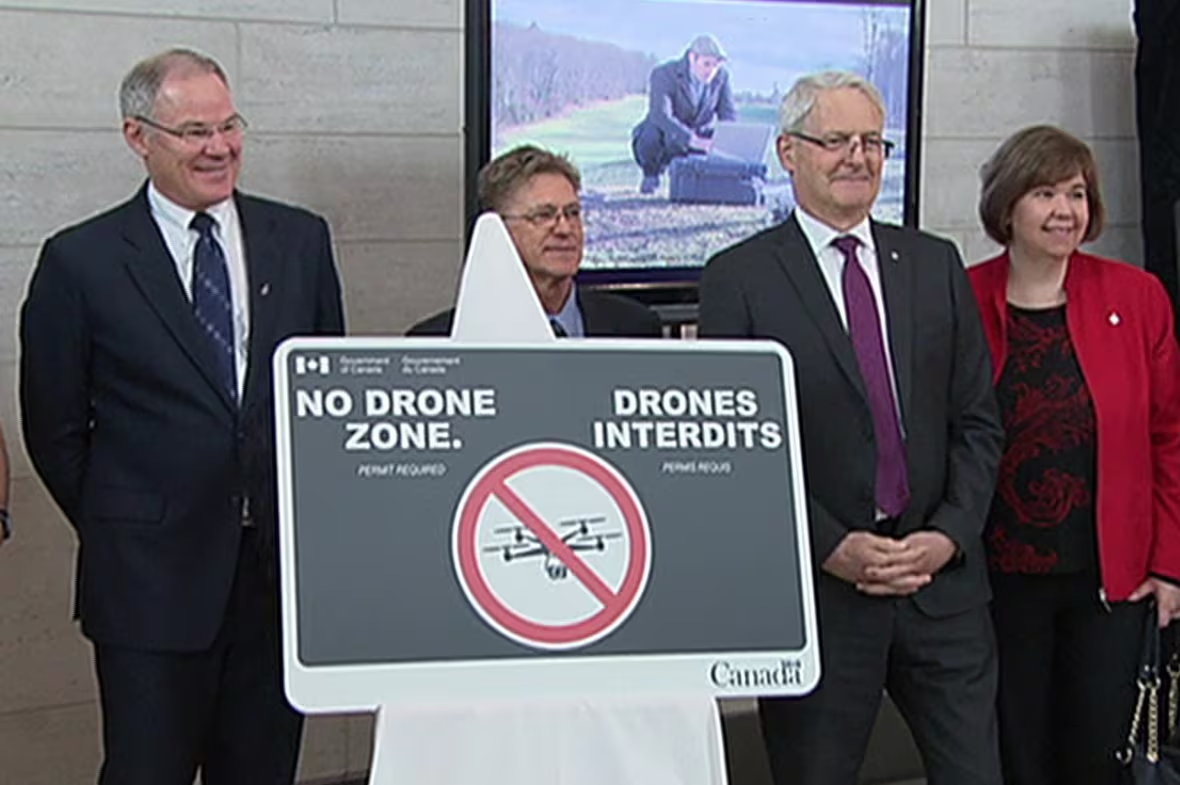'No drone zone' signs revealed for airports, more rules coming, minister says
'It seems some don't understand the risks involved or the potential danger'
As close calls between drones and planes become more and more common, the federal government has created "no drone zone" signs for airports and says draft legislation to strengthen drone rules is expected next year.
Transport Minister Marc Garneau made the announcement at the Ottawa airport Monday morning.
- Fighter jets scrambled after drone spotted near Ottawa airport
- Plane has close call with drone while landing in Winnipeg
It came nearly a month after NORAD scrambled two CF-18 fighter jets to intercept a drone seen flying at the Ottawa airport on May 25 by pilots on two descending passenger planes. The drone was never found.
And on Saturday in Winnipeg, a passenger plane came within 25 metres of a drone during its descent into the airport.
'Some don't understand the risks involved'
Currently, drones are not allowed to fly within nine kilometres of airports, and anyone found to be endangering aircraft could be subject to fines ranging from $3,000 to $25,000 and/or jail time.
Draft legislation to strengthen drone rules is expected in the first half of 2017, Garneau said. It will include:
- Establishing a categorization system for drones.
- Simplifying the process for registering drones.
- Instituting drone marking requirements.

The government is also considering new flight rules for drones, as well as implementing pilot permits and drone design standards, Garneau said.
"No drone zone" signs are being made available for large and small airports, but other organizations and companies are invited to contact the government if they want signs as well, Garneau said.
"I believe that most people operating drones want to do so legally and safely, but it seems some don't understand the risks involved or the potential danger," Garneau told reporters.
"Imagine being the pilot of a jet, airplane or helicopter, and having [a drone] hit your aircraft, your propeller, or go into an engine intake. As any pilot could tell you, the damage would likely be worse than a bird strike and the outcome could be tragic."

Drone incidents on the rise
Drone incidents are on the rise in Canada. In 2014, 61 such occurrences were investigated, followed by 96 in 2015. The government expects that number to grow this year as drones become more popular.
At the news conference on Monday, Marc Laroche, CEO of the Ottawa airport authority, called drones "an emerging and rapidly growing threat to aviation safety and security."
In 2015 Transport Canada issued 2,500 flight operation permits for drones weighing more than 35 kilograms, according to Laroche; nearly 1,200 have been issued so far in 2016.
"This begs the question: how many were not registered?" Laroche said.

Corrections
- A previous version of this story incorrectly stated that a drone was seen flying near the Ottawa airport on June 8. In fact, that incident occurred on May 25.Jun 13, 2016 11:07 AM EDT
